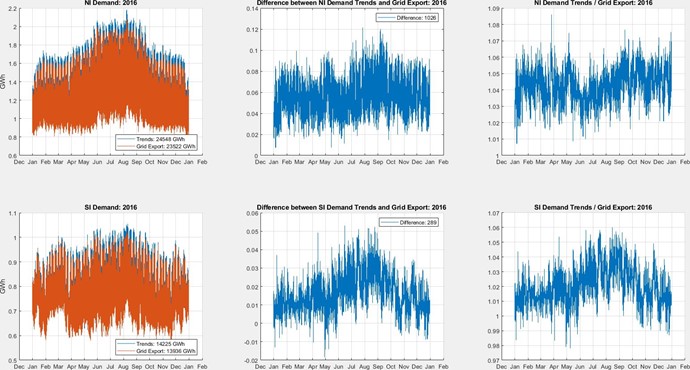Matthew Keir
posted this
13 March 2019
- Last edited 13 March 2019
Hi LJHS,
Yes, essentially you are correct.
Assuming you had the demand trend report set to reconciled demand. Reconciled demand is total demand including the impact of network losses but excluding transmission losses (transmission losses are taken into account in wholesale pricing engine SPD). Reconciled demand is what purchasers must pay for in the wholesale market and is available on a monthly basis. To say that another way it’s all the end consumption or offtake (within networks etc) grossed up to the impact or demand it imposes on the electricity system at the grid level.
Demand can be supplied by embedded generation or from offtake from the grid. However, the grid export is only a measure of offtake from the grid.
Over time both small and, in some cases, quite large generation has been embedded within networks. At the locations with large embedded generation, the output can often exceed local demand. This results in the excess being injected into the grid. Clearly, this injected energy from embedded generation is then used to satisfy demand at other GXPs. Hence it is not correct to assume grid offtake is supplied solely from grid-connected plant.
There are a couple of small exceptions to the above but I won’t complicate this post with these at this time. We are working on some new datasets that we hope to publish sometime this year which will improve the quality of information available in this space.
I hope that helps. If you haven't already you can click the demand tag for further discussion on demand.
Cheers,
Matthew


